Uses
This medication is used to treat blood clots (such as in deep vein thrombosis-DVT or pulmonary embolus-PE) and/or to prevent new clots from forming in your body. Preventing harmful blood clots helps to reduce the risk of a stroke or heart attack. Conditions that increase your risk of developing blood clots include a certain type of irregular heart rhythm (atrial fibrillation), heart valve replacement, recent heart attack, and certain surgeries (such as hip/knee replacement).Warfarin is commonly called a "blood thinner," but the more correct term is "anticoagulant." It helps to keep blood flowing smoothly in your body by decreasing the amount of certain substances (clotting proteins) in your blood.
How to use Warfarin SODIUM
Read the Medication Guide provided by your pharmacist before you start taking warfarin and each time you get a refill. If you have any questions, ask your doctor or pharmacist.
Take this medication by mouth with or without food as directed by your doctor or other health care professional, usually once a day. It is very important to take it exactly as directed. Do not increase the dose, take it more often, or stop using it unless directed by your doctor.
The dosage is based on your medical condition, lab tests (such as INR), and response to treatment. Your doctor or other health care provider will monitor you closely while you are taking this medication to determine the right dose for you.
Use this medication regularly to get the most benefit from it. To help you remember, take it at the same time each day.
It is important to eat a balanced, consistent diet while taking warfarin. Some foods can affect how warfarin works in your body and may affect your treatment and dose. Avoid sudden large increases or decreases in your intake of foods high in vitamin K (such as broccoli, cauliflower, cabbage, brussels sprouts, kale, spinach, and other green leafy vegetables, liver, green tea, certain vitamin supplements). If you are trying to lose weight, check with your doctor before you try to go on a diet.
Since this drug can be absorbed through the skin and lungs and may harm an unborn baby, women who are pregnant or who may become pregnant should not handle this medication or breathe the dust from the tablets.
Side Effects
Nausea, loss of appetite, or stomach/abdominal pain may occur. If any of these effects last or get worse, tell your doctor or pharmacist promptly.
Remember that this medication has been prescribed because your doctor has judged that the benefit to you is greater than the risk of side effects. Many people using this medication do not have serious side effects.
This medication can cause serious bleeding if it affects your blood clotting proteins too much (shown by unusually high INR lab results). Even if your doctor stops your medication, this risk of bleeding can continue for up to a week. Tell your doctor right away if you have any signs of serious bleeding, including: nosebleeds that happen often or don't stop, unusual pain/swelling/discomfort, unusual/easy bruising, prolonged bleeding from cuts or gums, unusually heavy/prolonged menstrual flow, pink/dark urine, coughing up blood, vomit that is bloody or looks like coffee grounds, severe headache, dizziness/fainting, unusual tiredness/weakness, bloody/black/tarry stools, chest pain, shortness of breath, difficulty swallowing.
Tell your doctor right away if you have any serious side effects, including: nausea/vomiting that doesn't stop, severe stomach/abdominal pain, yellowing eyes/skin.
This drug rarely has caused very serious (possibly fatal) problems if its effects lead to small blood clots (usually at the beginning of treatment). This can lead to severe skin/tissue damage that may require surgery or amputation if left untreated. Patients with certain blood conditions (protein C or S deficiency) may be at greater risk. Get medical help right away if any of these rare but serious side effects occur: painful/red/purplish patches on the skin (such as on the toe, breast, abdomen), signs of kidney problems (such as change in the amount of urine), vision changes, confusion, trouble speaking, weakness on one side of the body.
A very serious allergic reaction to this drug is rare. However, get medical help right away if you notice any symptoms of a serious allergic reaction, including: rash, itching/swelling (especially of the face/tongue/throat), severe dizziness, trouble breathing.
This is not a complete list of possible side effects. If you notice other effects not listed above, contact your doctor or pharmacist.
In the US -
Call your doctor for medical advice about side effects. You may report side effects to FDA at 1-800-FDA-1088 or at www.fda.gov/medwatch.
In Canada - Call your doctor for medical advice about side effects. You may report side effects to Health Canada at 1-866-234-2345.
Warnings
Warfarin can cause very serious (possibly fatal) bleeding. This is more likely to occur when you first start taking this medication or if you take too much warfarin.
To decrease your risk for bleeding, your doctor or other health care provider will monitor you closely and check your lab results (INR test) to make sure you are not taking too much warfarin. Keep all medical and lab appointments. Tell your doctor right away if you notice any signs of serious bleeding. See also Side Effects section.
Precautions
Before taking warfarin, tell your doctor or pharmacist if you are allergic to it; or if you have any other allergies. This product may contain inactive ingredients, which can cause allergic reactions or other problems. Talk to your pharmacist for more details.
Before using this medication, tell your doctor or pharmacist your medical history, especially of: blood disorders (such as anemia, hemophilia), bleeding problems (such as bleeding of the stomach/intestines, bleeding in the brain), blood vessel disorders (such as aneurysms), recent major injury/surgery, kidney disease, liver disease, alcohol use, mental/mood disorders (including memory problems), frequent falls/injuries.
It is important that all your doctors and dentists know that you take warfarin. Before having surgery or any medical/dental procedures, tell your doctor or dentist that you are taking this medication and about all the products you use (including prescription drugs, nonprescription drugs, and herbal products).
Avoid getting injections into the muscles. If you must have an injection into a muscle (for example, a flu shot), it should be given in the arm. This way, it will be easier to check for bleeding and/or apply pressure bandages.
This medication may cause stomach bleeding. Daily use of alcohol while using this medicine will increase your risk for stomach bleeding and may also affect how this medication works. Limit alcoholic beverages. Ask your doctor or pharmacist about how much alcohol you may safely drink.
If you have not been eating well, if you have an illness or infection that causes fever, vomiting, or diarrhea for more than 2 days, or if you start using any antibiotic medications, contact your doctor or pharmacist right away because these conditions can affect how warfarin works.
This medication can cause heavy bleeding. To lower the chance of getting cut, bruised, or injured, use great caution with sharp objects like safety razors and nail cutters. Use an electric razor when shaving and a soft toothbrush when brushing your teeth. Avoid activities such as contact sports. If you fall or injure yourself, especially if you hit your head, call your doctor right away. Your doctor may need to check you.
The FDA has stated that generic warfarin products are interchangeable. However, consult your doctor or pharmacist before switching warfarin products. Be careful not to take more than one medication that contains warfarin unless specifically directed by the doctor or health care provider who is monitoring your warfarin treatment.
Older adults may be at greater risk for bleeding while using this drug.
Tell your doctor if you are pregnant or plan to become pregnant. You should not become pregnant while using warfarin. Warfarin may harm an unborn baby. Your doctor should order a pregnancy test before you start this medication. Ask about reliable forms of birth control while using this medication and for at least 1 month after the last dose. If you become pregnant, talk to your doctor right away about the risks and benefits of this medication. If you are planning pregnancy, discuss a plan for managing your condition with your doctor before you become pregnant. Your doctor may switch the type of medication you use during pregnancy.
Since this drug can be absorbed through the skin and lungs and may harm an unborn baby, women who are pregnant or who may become pregnant should not handle this medication or breathe the dust from the tablets.
Very small amounts of this medication may pass into breast milk but is unlikely to harm a nursing infant. Consult your doctor before breastfeeding.
Interactions
See also How to Use section.
Drug interactions may change how your medications work or increase your risk for serious side effects. This document does not contain all possible drug interactions. Keep a list of all the products you use (including prescription/nonprescription drugs and herbal products) and share it with your doctor and pharmacist. Do not start, stop, or change the dosage of any medicines without your doctor's approval.
Warfarin interacts with many prescription, nonprescription, vitamin, and herbal products. This includes medications that are applied to the skin or inside the vagina or rectum. The following interactions listed do not contain all possible drug interactions. The interactions with warfarin usually result in an increase or decrease in the "blood-thinning" (anticoagulant) effect. Your doctor or other health care professional should closely monitor you to prevent serious bleeding or clotting problems. While you are taking warfarin, it is very important to tell your doctor or pharmacist of any changes in medications, vitamins, or herbal products that you are taking.
Some products that may interact with this drug include: imatinib, marijuana (cannabis), dronabinol, mifepristone, other drugs that can cause bleeding/bruising (including "blood thinners" such as apixaban/dabigatran).
Aspirin, aspirin-like drugs (salicylates), and nonsteroidal anti-inflammatory drugs (NSAIDs such as ibuprofen, naproxen, celecoxib) may have effects similar to warfarin. These drugs may increase the risk of bleeding problems if taken during treatment with warfarin. Carefully check all prescription/nonprescription product labels (including drugs applied to the skin such as pain-relieving creams) since the products may contain NSAIDs or salicylates. Talk to your doctor about using a different medication (such as acetaminophen) to treat pain/fever. However, if your doctor has told you to take low-dose aspirin to prevent heart attack or stroke (usually 81-162 milligrams a day), you should keep taking the aspirin unless your doctor tells you not to. Ask your doctor or pharmacist for more details.
This medication may interfere with certain lab tests (such as theophylline levels), possibly causing false test results. Make sure lab personnel and all your doctors know you use this drug.
Overdose
If someone has overdosed and has serious symptoms such as passing out or trouble breathing, call 911. Otherwise, call a poison control center right away. US residents can call 1-800-222-1222. Canada residents can call 1-844-764-7669. Symptoms of overdose may include: bloody/black/tarry stools, pink/dark urine, unusual/prolonged bleeding.
Do not share this medication with others.
Lab and/or medical tests (such as INR, complete blood count) must be done while you are taking this medication. Keep all medical and lab appointments. Consult your doctor for more details.
For the best possible benefit, do not miss any doses. If you miss a dose, take it as soon as you remember. If you don't remember until the next day, skip the missed dose. Take your next dose at the regular time. Do not double the dose to catch up because this could increase your risk for bleeding. Keep a record of missed doses to give to your doctor or pharmacist. Contact your doctor or pharmacist if you miss 2 or more doses in a row.
Store at room temperature away from light and moisture. Do not store in the bathroom. Keep all medications away from children and pets.
Do not flush medications down the toilet or pour them into a drain unless instructed to do so. Properly discard this product when it is expired or no longer needed. Consult your pharmacist or local waste disposal company.
Images
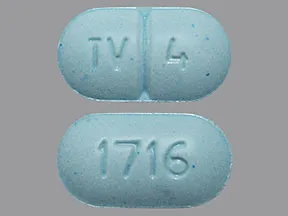
warfarin 4 mg tablet
Color: blueShape: oblongImprint: TV 4 1716This medicine is a blue, oblong, scored, tablet imprinted with "TV 4" and "1716".
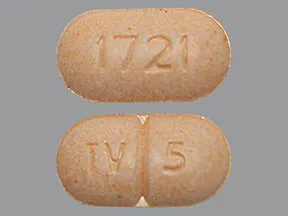
warfarin 5 mg tablet
Color: peachShape: oblongImprint: TV 5 1721This medicine is a blue, oblong, scored, tablet imprinted with "TV 4" and "1716".
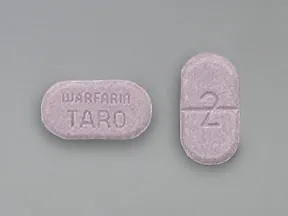
warfarin 2 mg tablet
Color: lavenderShape: oblongImprint: 2 WARFARIN TAROThis medicine is a blue, oblong, scored, tablet imprinted with "TV 4" and "1716".
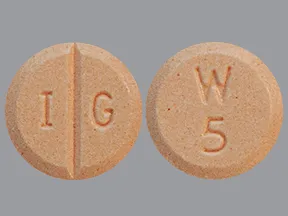
warfarin 5 mg tablet
Color: peachShape: roundImprint: I G W 5This medicine is a blue, oblong, scored, tablet imprinted with "TV 4" and "1716".
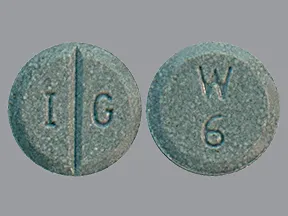
warfarin 6 mg tablet
Color: tealShape: roundImprint: I G W 6This medicine is a blue, oblong, scored, tablet imprinted with "TV 4" and "1716".

warfarin 3 mg tablet
Color: tanShape: roundImprint: I G W 3This medicine is a blue, oblong, scored, tablet imprinted with "TV 4" and "1716".

warfarin 2.5 mg tablet
Color: greenShape: roundImprint: I G W 2 1/2This medicine is a blue, oblong, scored, tablet imprinted with "TV 4" and "1716".
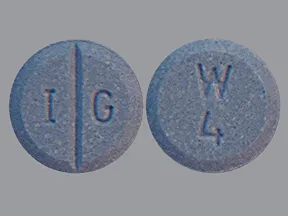
warfarin 4 mg tablet
Color: blueShape: roundImprint: I G W 4This medicine is a blue, oblong, scored, tablet imprinted with "TV 4" and "1716".
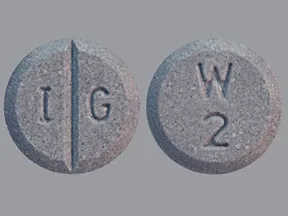
warfarin 2 mg tablet
Color: lavenderShape: roundImprint: I G W 2This medicine is a blue, oblong, scored, tablet imprinted with "TV 4" and "1716".

warfarin 1 mg tablet
Color: light pinkShape: roundImprint: I G W 1This medicine is a blue, oblong, scored, tablet imprinted with "TV 4" and "1716".
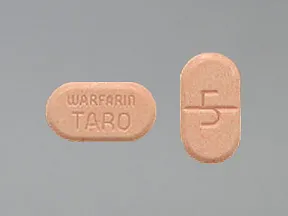
warfarin 5 mg tablet
Color: peachShape: oblongImprint: 5 WARFARIN TAROThis medicine is a blue, oblong, scored, tablet imprinted with "TV 4" and "1716".
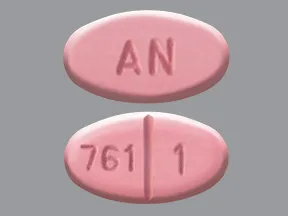
warfarin 1 mg tablet
Color: pinkShape: ovalImprint: AN 761 1This medicine is a blue, oblong, scored, tablet imprinted with "TV 4" and "1716".
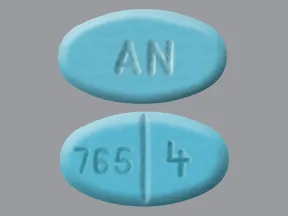
warfarin 4 mg tablet
Color: blueShape: ovalImprint: AN 765 4This medicine is a blue, oblong, scored, tablet imprinted with "TV 4" and "1716".
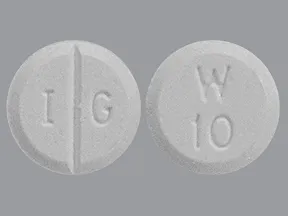
warfarin 10 mg tablet
Color: whiteShape: roundImprint: I G W 10This medicine is a blue, oblong, scored, tablet imprinted with "TV 4" and "1716".
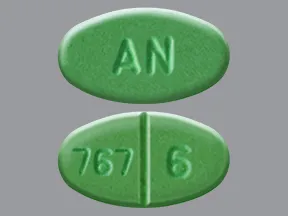
warfarin 6 mg tablet
Color: tealShape: ovalImprint: AN 767 6This medicine is a blue, oblong, scored, tablet imprinted with "TV 4" and "1716".
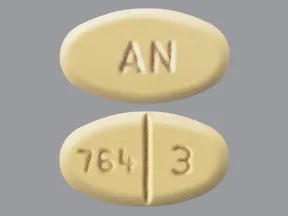
warfarin 3 mg tablet
Color: tanShape: ovalImprint: AN 764 3This medicine is a blue, oblong, scored, tablet imprinted with "TV 4" and "1716".
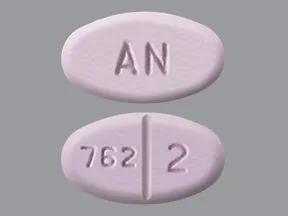
warfarin 2 mg tablet
Color: lavenderShape: ovalImprint: AN 762 2This medicine is a blue, oblong, scored, tablet imprinted with "TV 4" and "1716".
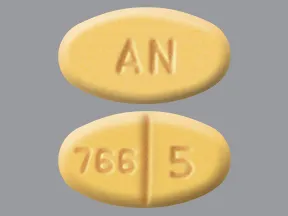
warfarin 5 mg tablet
Color: peachShape: ovalImprint: AN 766 5This medicine is a blue, oblong, scored, tablet imprinted with "TV 4" and "1716".

warfarin 4 mg tablet
Color: blueShape: oblongImprint: 4 WARFARIN TAROThis medicine is a blue, oblong, scored, tablet imprinted with "TV 4" and "1716".
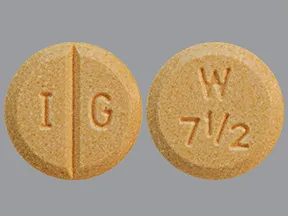
warfarin 7.5 mg tablet
Color: yellowShape: roundImprint: I G W 7 1/2This medicine is a blue, oblong, scored, tablet imprinted with "TV 4" and "1716".
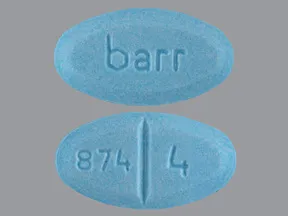
warfarin 4 mg tablet
Color: blueShape: ovalImprint: 874 4 barrThis medicine is a blue, oblong, scored, tablet imprinted with "TV 4" and "1716".

warfarin 2 mg tablet
Color: lavenderShape: oblongImprint: TV 2 1713This medicine is a blue, oblong, scored, tablet imprinted with "TV 4" and "1716".
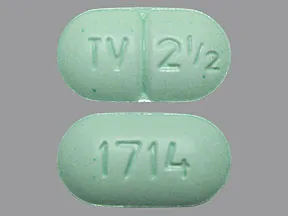
warfarin 2.5 mg tablet
Color: greenShape: oblongImprint: TV 2 1/2 1714This medicine is a blue, oblong, scored, tablet imprinted with "TV 4" and "1716".
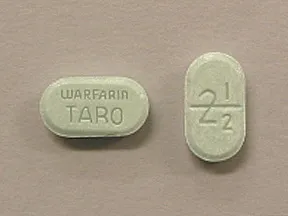
warfarin 2.5 mg tablet
Color: greenShape: oblongImprint: 2 1/2 WARFARIN TAROThis medicine is a blue, oblong, scored, tablet imprinted with "TV 4" and "1716".
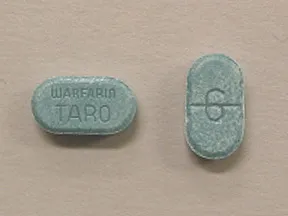
warfarin 6 mg tablet
Color: tealShape: oblongImprint: 6 WARFARIN TAROThis medicine is a blue, oblong, scored, tablet imprinted with "TV 4" and "1716".
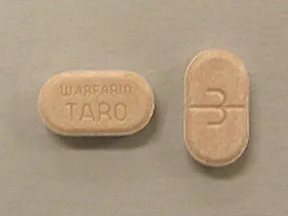
warfarin 3 mg tablet
Color: tanShape: oblongImprint: 3 WARFARIN TAROThis medicine is a blue, oblong, scored, tablet imprinted with "TV 4" and "1716".
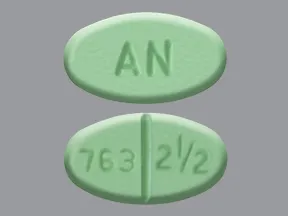
warfarin 2.5 mg tablet
Color: greenShape: ovalImprint: AN 763 2 1/2This medicine is a blue, oblong, scored, tablet imprinted with "TV 4" and "1716".
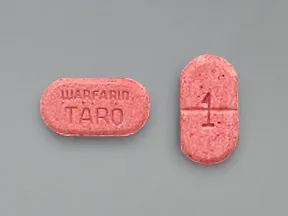
warfarin 1 mg tablet
Color: pinkShape: oblongImprint: 1 WARFARIN TAROThis medicine is a blue, oblong, scored, tablet imprinted with "TV 4" and "1716".

warfarin 7.5 mg tablet
Color: yellowShape: oblongImprint: 7.5 WARFARIN TAROThis medicine is a blue, oblong, scored, tablet imprinted with "TV 4" and "1716".
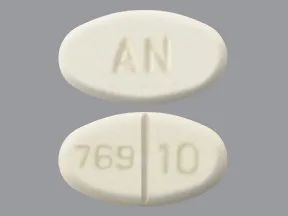
warfarin 10 mg tablet
Color: whiteShape: ovalImprint: AN 769 10This medicine is a blue, oblong, scored, tablet imprinted with "TV 4" and "1716".
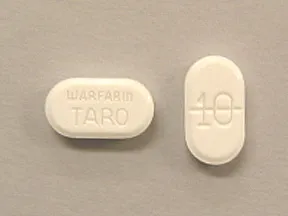
warfarin 10 mg tablet
Color: whiteShape: oblongImprint: 10 WARFARIN TAROThis medicine is a blue, oblong, scored, tablet imprinted with "TV 4" and "1716".

warfarin 7.5 mg tablet
Color: yellowShape: oblongImprint: 7.5 WARFARIN TAROThis medicine is a blue, oblong, scored, tablet imprinted with "TV 4" and "1716".
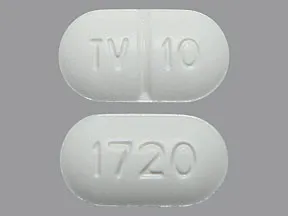
warfarin 10 mg tablet
Color: whiteShape: oblongImprint: TV 10 1720This medicine is a blue, oblong, scored, tablet imprinted with "TV 4" and "1716".
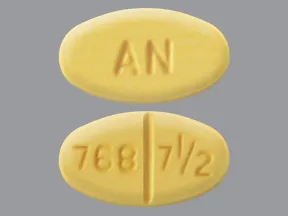
warfarin 7.5 mg tablet
Color: yellowShape: ovalImprint: AN 768 7 1/2This medicine is a blue, oblong, scored, tablet imprinted with "TV 4" and "1716".
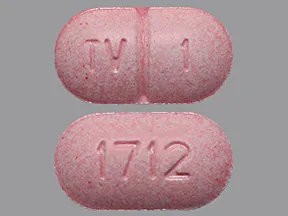
warfarin 1 mg tablet
Color: pinkShape: oblongImprint: TV 1 1712This medicine is a blue, oblong, scored, tablet imprinted with "TV 4" and "1716".

warfarin 7.5 mg tablet
Color: yellowShape: oblongImprint: TV 7 1/2 1719This medicine is a blue, oblong, scored, tablet imprinted with "TV 4" and "1716".
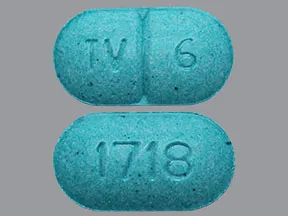
warfarin 6 mg tablet
Color: tealShape: oblongImprint: TV 6 1718This medicine is a blue, oblong, scored, tablet imprinted with "TV 4" and "1716".
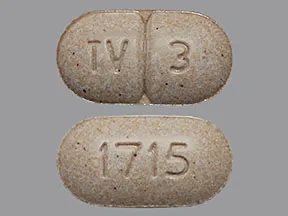
warfarin 3 mg tablet
Color: tanShape: oblongImprint: TV 3 1715This medicine is a blue, oblong, scored, tablet imprinted with "TV 4" and "1716".
Are you currently using Warfarin SODIUM?
This survey is being conducted by the WebMD marketing sciences department.
Selected from data included with permission and copyrighted by First Databank, Inc. This copyrighted material has been downloaded from a licensed data provider and is not for distribution, except as may be authorized by the applicable terms of use.
CONDITIONS OF USE: The information in this database is intended to supplement, not substitute for, the expertise and judgment of healthcare professionals. The information is not intended to cover all possible uses, directions, precautions, drug interactions or adverse effects, nor should it be construed to indicate that use of a particular drug is safe, appropriate or effective for you or anyone else. A healthcare professional should be consulted before taking any drug, changing any diet or commencing or discontinuing any course of treatment.